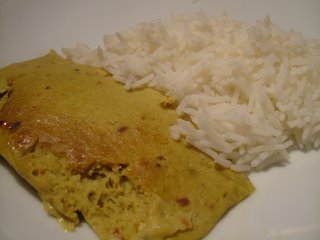This is a wonderful American way with pork. Barbecue purists (a curiously wonderful breed made up entirely of American men – I have never met a woman or a non-American who takes the barbecue quite as seriously as these guys do) should haul out their smokers for this recipe. One team at the American Royal Barbecue championship last year had a smoker made from the body of a Cessna aeroplane.
I used my oven and added a tablespoon of liquid smoke at the end.
The smoke flavour in this recipe is a great addition (UK cooks can buy liquid smoke online – I haven’t found a brand I’ve not enjoyed, but Colgin makes a particularly good version). All the same, if you don’t have access to a small adapted aircraft or liquid smoke, you shouldn’t worry. Your pork will still have a wonderful, barbecue sauce flavour.
In the US you’d use pork butt (actually shoulder) for this recipe. In other countries like the UK we butcher pigs rather differently, so just find a nice, fatty, boned piece of shoulder if you can’t get your hands on the exact cut. The fat is important; the joint cooks for a long time and its fat will baste it from within and keep the meat delectably moist.
To serve about six people you’ll need:
One boneless pork butt or boneless shoulder (about 3 lb)
4 tablespoons soft light brown sugar
2 tablespoons coarse salt
2 tablespoons paprika
2 tablespoons cinnamon powder
1 tablespoon mustard powder
10 turns of the peppermill
1 tablespoon chilli powder (I used chipotle chilli powder for the smoky taste, but you can use your favourite)
1 teaspoon coriander powder
1 teaspoon onion salt
12 fl oz (1 ½ cups) apple juice
6 fl oz (¾ cup) water
Mix all the dry ingredients in a large bowl, and rub them thoroughly all over the pork in the same bowl. If your cut of meat has been boned and rolled, you can push some of the rub into the space where the bone used to be as well, seasoning the meat inside and out. Leave the meat in the bowl and leave, covered, in the fridge overnight.
About six hours before you want to eat, preheat the oven or smoker to 150° C (300° F). Place the pork joint, skin side up, on a rack in a roasting tin. Pour the apple juice and water into the bottom of the tin. (The liquid should not be touching the meat.) Cover the roasting tin tightly with a few layers of tin foil and place in the oven for five hours. Don’t poke at the pork while it’s cooking; it should be left to steam gently in its tinfoil hat.
When the five hours are up, remove the tinfoil. If the liquid in the pan looks like it might dry up, add a wine glass of water. Turn the heat up to 200° C (400° F) and cook the joint uncovered for half an hour. Remove the meat to a large bowl, keeping the juices in the bottom of the roasting tin.
Use two forks to shred the pork. It’ll come to pieces very easily after the long cooking time, and should be moist and delicate with a slight crisp to the outsides. Place the shredded pork in a large frying pan with all its juices and the liquid from the roasting tin. Add another tablespoon of soft light brown sugar, an extra teaspoon of chilli powder if you want some extra kick, and a tablespoon of liquid smoke if you can find some (I like applewood liquid smoke for this recipe). Cook over a medium heat until the liquid in the pan begins to become syrupy.
Serve the pork with its sauce in toasted burger buns. The pork will keep in the fridge for a couple of days. Sweetcorn, coleslaw and other traditional barbecue accompaniments make a great side dish. Try not to get too much down your front.





